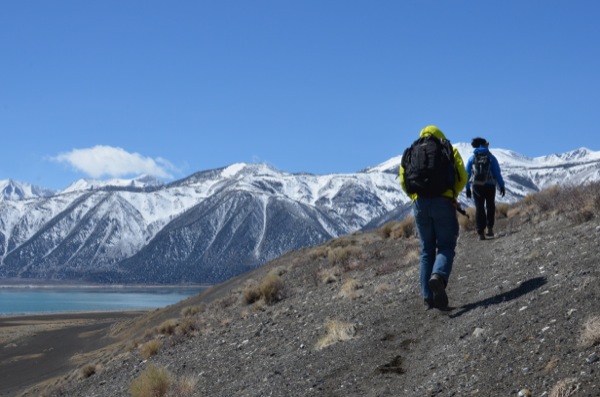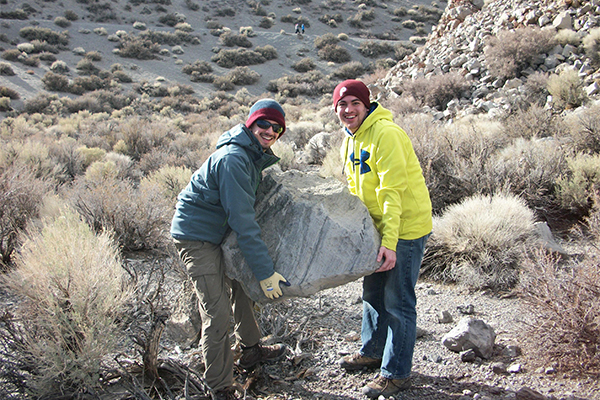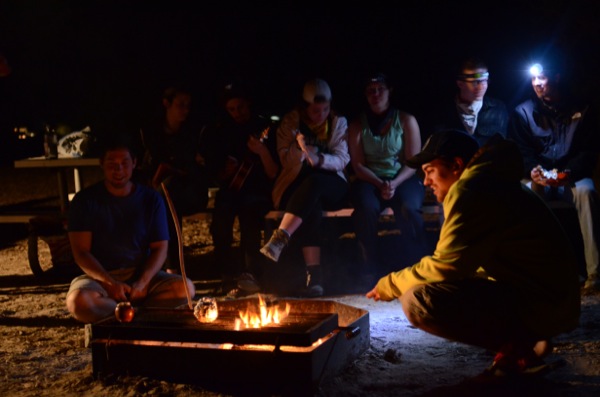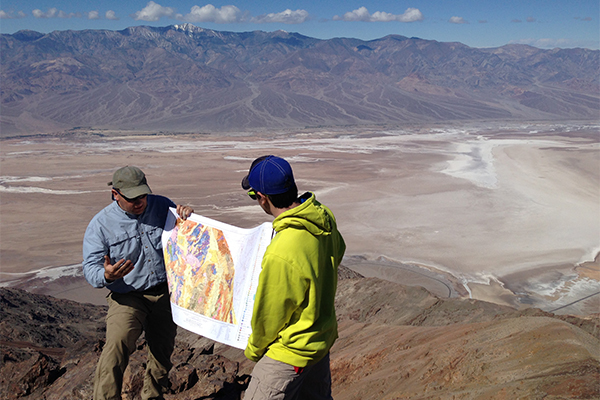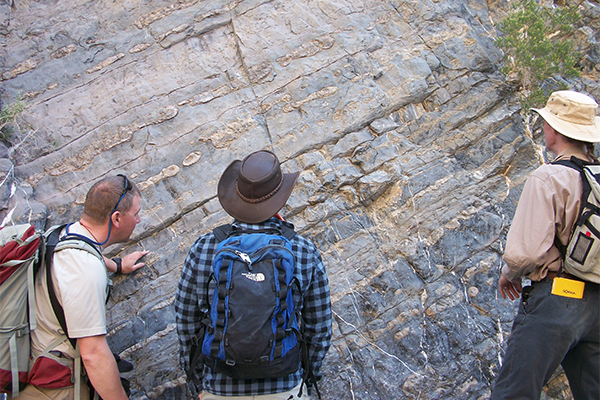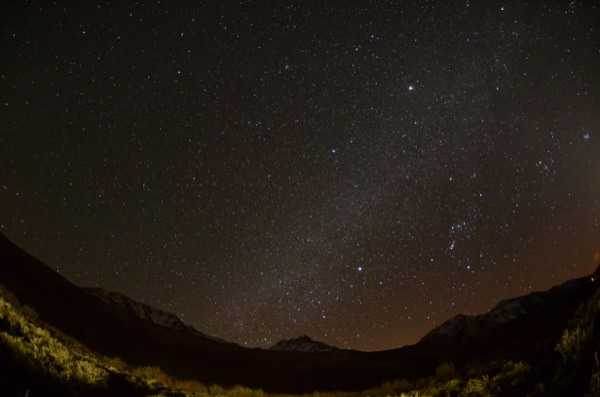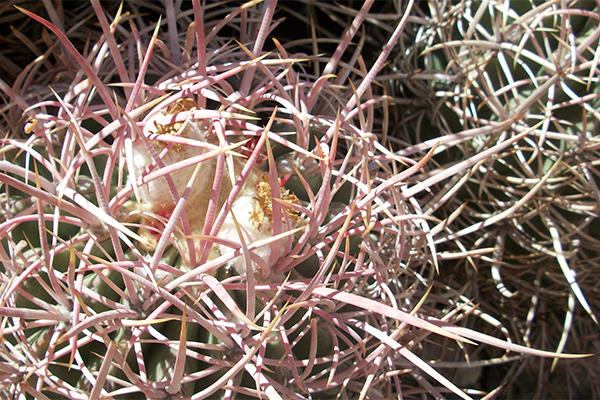

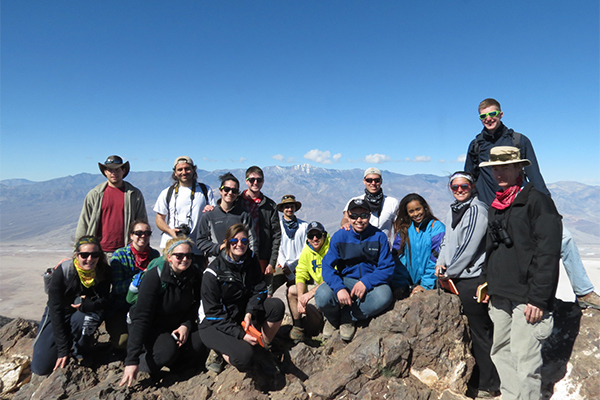
Destination Death Valley
Students explore 'geologist's playground,' gain field experience during spring break
10:51 a.m., April 25, 2014--In California’s Death Valley, the weather challenge in early spring is not extreme heat; it’s the wind. Gusts at speeds of 60 miles per hour can burst through campsites, blowing over unoccupied tents and pelting the surroundings with sand.
“The dust storms toward evening were a little intense,” said geological sciences graduate student Daniel Hubacz, who experienced such conditions on a University of Delaware College of Earth, Ocean, and Environment (CEOE) field trip over spring break. “But other than that, it was great.”
Campus Stories
From graduates, faculty
Doctoral hooding
Hubacz was among 18 graduate and undergraduate students who joined instructor Claudio Berti for a 1,400-mile, weeklong adventure through the Sierra Nevada mountain range and into the lowest point in North America, Death Valley. The students saw geological formations firsthand and practiced scientific observation techniques while gaining a sense of the rustic nature of fieldwork.
CEOE’s Department of Geological Sciences intends to organize a spring break trip every year moving forward for students enrolled in a semester-long field geology course. The excursion is generously subsidized by alumni donors, such that this year students only had to pay about $150 for travel expenses.
Faculty selected Death Valley as the destination, a place that Berti, a new visiting professor, has frequented in past research projects. Located in southeastern California near the Nevada border, the desert region is best known for stifling temperatures and a parched climate. Roadrunners and coyotes also come to mind — which sure enough, the students encountered during their journey.
From a geologist’s perspective, the area is a hotbed of earth science highlights. The striking landscape exposes rocks brought to the surface from deep in the earth’s crust by the movement of faults, which students can touch as they observe how rock structures move in relation to each other. Ruptures from the last major earthquake are still visible on the ground.
Bright white salt encrusts areas where lakes evaporated since the end of the last Ice Age, and billion-year-old deposits remain right next to where new rocks are still forming. A young volcanic complex just east of the Sierras that last erupted only 500 years ago has a crater so well preserved that students can picture it still in action, and porous pumice deposits there are light enough to easily lift.
“It’s a spectacular place — a geologist’s playground,” Berti said. “The whole idea of the trip is to expose students to as many geology-related topics as possible, and it is hard to find a place that beats Death Valley for the variety of examples that it offers.”
Berti covered background content in the classroom before the trip, and then gave on-location lectures before letting students hike and explore locales on their own. Karice Redhead, a junior majoring in geological sciences, said she understood the scale and formation dynamics differently after seeing them in person.
“They don’t always look how you think they would from looking in a textbook,” she said.
The trip also gave her a first experience in camping, which she was nervous about beforehand. She was pleasantly surprised at the “very freeing” feeling of putting down her cell phone for a week and enjoying the environment outdoors — even with chilly temperatures in the mountains, coyotes wandering through camp and sand dusting her mouth in the morning.
“It was gorgeous,” Redhead said. “I thought it was an amazing trip.”
Other students participating had already been out West or completed shorter field experiences, which are a part of the requirements for a geological sciences student.
Hubacz, who is in his second year of doctoral studies and hopes to enter academia, said he values observing how different professors teach field geology and which content students readily retain. Planning a career of research and teaching, he encourages others to make real-world experiences part of the learning process.
“Whenever you get the chance to go outside and see geology in the field, you take it,” Hubacz said about the Death Valley trip. “It was an excellent opportunity.”
Article by Teresa Messmore
Photos courtesy of Claudio Berti, Chris Myers, Ross Elliott, Coty Cribb and Jeremy Keeler




